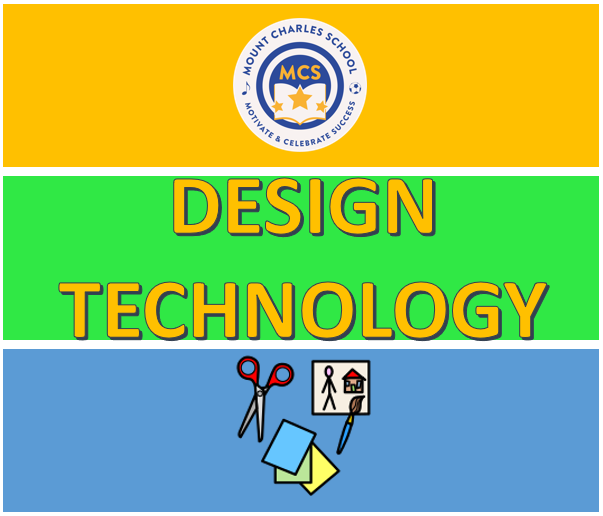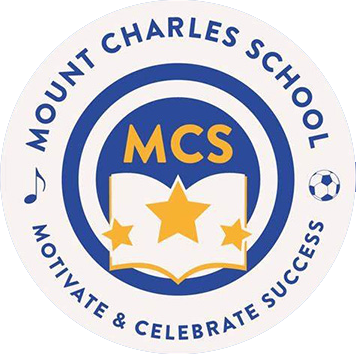 Proud to be a part of Cornwall Education Learning Trust
Proud to be a part of Cornwall Education Learning Trust

Design Technology

INTENT
Design and Technology is a creative and practical subject. It allows pupils to think creatively when solving problems both as individuals and alongside others. At Mount Charles School, we encourage pupils to use their creativity and imagination to design and make products that solve real and relevant problems within a variety of contexts, considering their own and others’ needs, wants and values. We aim to, wherever possible, link learning to other curriculum areas such as maths, English, science, computing, and art. Pupils are given opportunities to reflect upon and evaluate past and present well-known Design Technology pieces, their uses and overall effectiveness. Using the design and making process as well as learning from well known designers and engineers, pupils are encouraged to be ambitious when innovating their own designs. We believe that, through Design and Technology, pupils develop the skills they need to be the designers and innovators of the future.
IMPLEMENTATION
Through a variety of creative and practical activities, inspired by Kapow Primary, we teach the knowledge, understanding and skills needed to engage in an interactive process of design and making, in-line with the expectations of the National Curriculum. In DT, pupils work in a range of relevant contexts (for example home, school, leisure, culture, enterprise, industry, and the wider environment) to design and make solutions to posed problems or briefs. Through the evaluation of past and present Design and Technology, pupils develop and critical understanding of its impact on daily life and the wider world. When designing and making, the pupils are taught to:
Ask
Getting to the root of the problem.
- Through discussion of the following questions a clear understanding is reached of the problem that needs to be solved.
- Who is impacted by the problem? What results are we trying to achieve? Are there any constraints or limitations?
Imagine
What ways can I solve this problem? What existing products are there already?
- Generate a range of ideas to solve the problem from multiple sources
- Use research to discover how existing products have solved the problem area
- To find out how others have solved both related and unrelated problems can lead to innovative solutions.
Plan
What will I include in my design? What is the design criteria?
- Select the best ideas to explore further
- Generate design drawings and sketches
- Develop designs for a prototype and consider where the design may fail, and things how could be made most efficiently.
Create
How will I make the product? What materials will I use? What tools will I need? Do I know how to use the tools safely?
- Bring ideas to life by building a prototype
- Use appropriate tools for the issue trying to be resolved. Test Does it work? Is it effective?
- Gain feedback and insight from putting the prototype to use
- Ensure the prototype is tested many times and results are recorded
- Collect accurate feedback to inform evaluation.
Evaluate
What are the strengths? What are the weaknesses? How could I improve it?
- Use the test results to identify improvements
- Showing an understanding and evidence of what the improvements could be.
These are the stages of our Mount Charles Design and Technology process which we work through in every unit across the school to equip our pupils with the skills required or designers and makers.
By the time pupils leave our school our Design Technology Curriculum means that they will have:
- Developed the creative, technical, and practical expertise needed to perform everyday tasks confidently.
- Built and applied a repertoire of knowledge, understanding and skills in order to design and make high quality prototypes and products for a wide range of users having critiqued, evaluated and tested their ideas and products as well as the work of others.
- Acquired an understanding of and be able to apply the principles of nutrition and how to cook. Pupils will have designed and made a range of products.
IMPACT
We closely monitor and track the progress and attainment of our pupils in their Design Technology skills and outcomes and believe, as a result of the following evidence, that we are successfully achieving our intent for Design and Technology.
When pupils leave us, feedback from staff and monitoring suggests that pupils have learnt how to take calculated risks in their designs; becoming resourceful, innovative, enterprising, and capable citizens. Through the evaluation of past and present Design and Technology, they leave us having developed a critical understanding of this subject’s significance and its impact on daily life and the wider world.
As a result of our Design and Technology curriculum, pupils leave Mount Charles as competent designers and innovators. Pupils gain a firm foundation of knowledge and skills to see them equipped to take on further learning in secondary school.
Subject Leader monitoring has shown...
- Teachers plan lessons that meet the needs of all learners.
- Teachers are secure in their subject knowledge.
- Pupils talk with a passion about Design and Technology
- Evidence of cross-curricular links especially in Computing and Maths
- Pupils take pride in their work during Design and Technology leading to successful outcomes.
- Pupils of all abilities feel success in Design and Technology lessons.
- Pupils are engaged in a wide range of Design and Technology activities.
- Pupils are completing appropriate work in books, linked to the LO and desired outcomes.
Impact of Science at Mount Charles School is carefully tracked and measured by…
- Pupil conferencing focused on Design and Technology
- Ongoing observation of the teaching of Design and Technology across all year groups
- Regular monitoring of pupils’ Gold Books
- successes and feedback shared with teachers.
- Learning walks to monitor the quality of teaching
- Ongoing monitoring of short term and midterm planning
- The quality of pupil outcomes at the end of a Design and Technology project through pupil evaluation
- Termly teacher assessment of pupils’ attainment in Design and Technology using Insight.
- Continuous formative assessment during the teaching of Design and Technology.
Our last outgoing data for Year 6 for the year 23/24 showed that 83% of pupils met the expected standard for Design and Technology.
In the year 22/23, 35% of SEND pupils across the school were achieving the expected standard, below that for non-SEND pupils, so we made improving this a priority. In collaboration with the SENDco, the DT subject lead identified motor control as an area for development. Motor control interventions and a specific focus on the teaching of pencil grip in EYFS and KS1 then became a focus in 23/24 onwards with provisions made to support pupils in DT and across the curriculum. This has seen motor control improve. As a result, in the year 23/24, 45% of SEND pupils across the school were achieving the expected standard – an increase on 10%. This continues to be a focus area for development, but data shows impact and progress are being made over time. We are confident that the adaptations we make to our SEND provision for DT, means our intent, of a high-quality Design and Technology curriculum for all, are being realised for all pupils.
